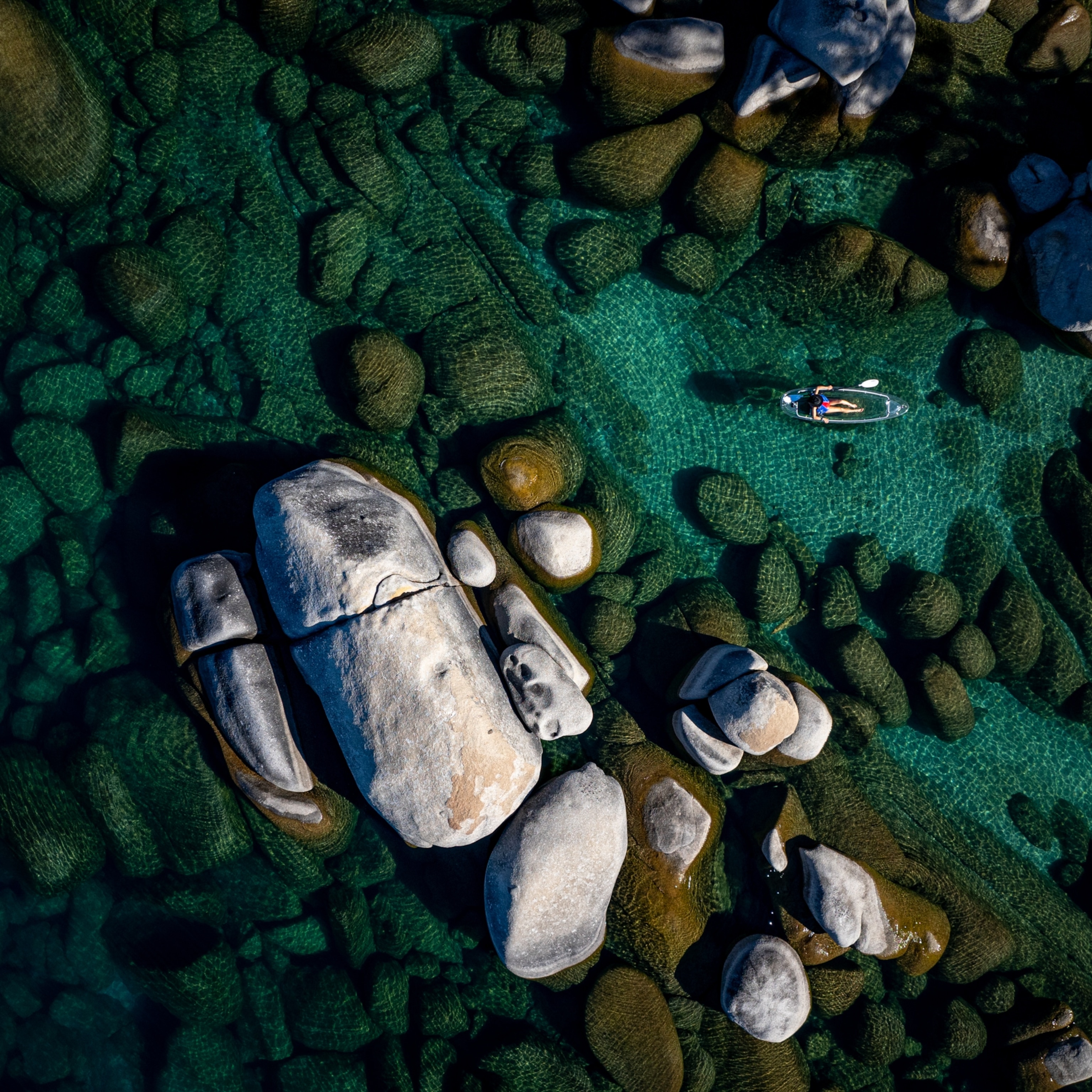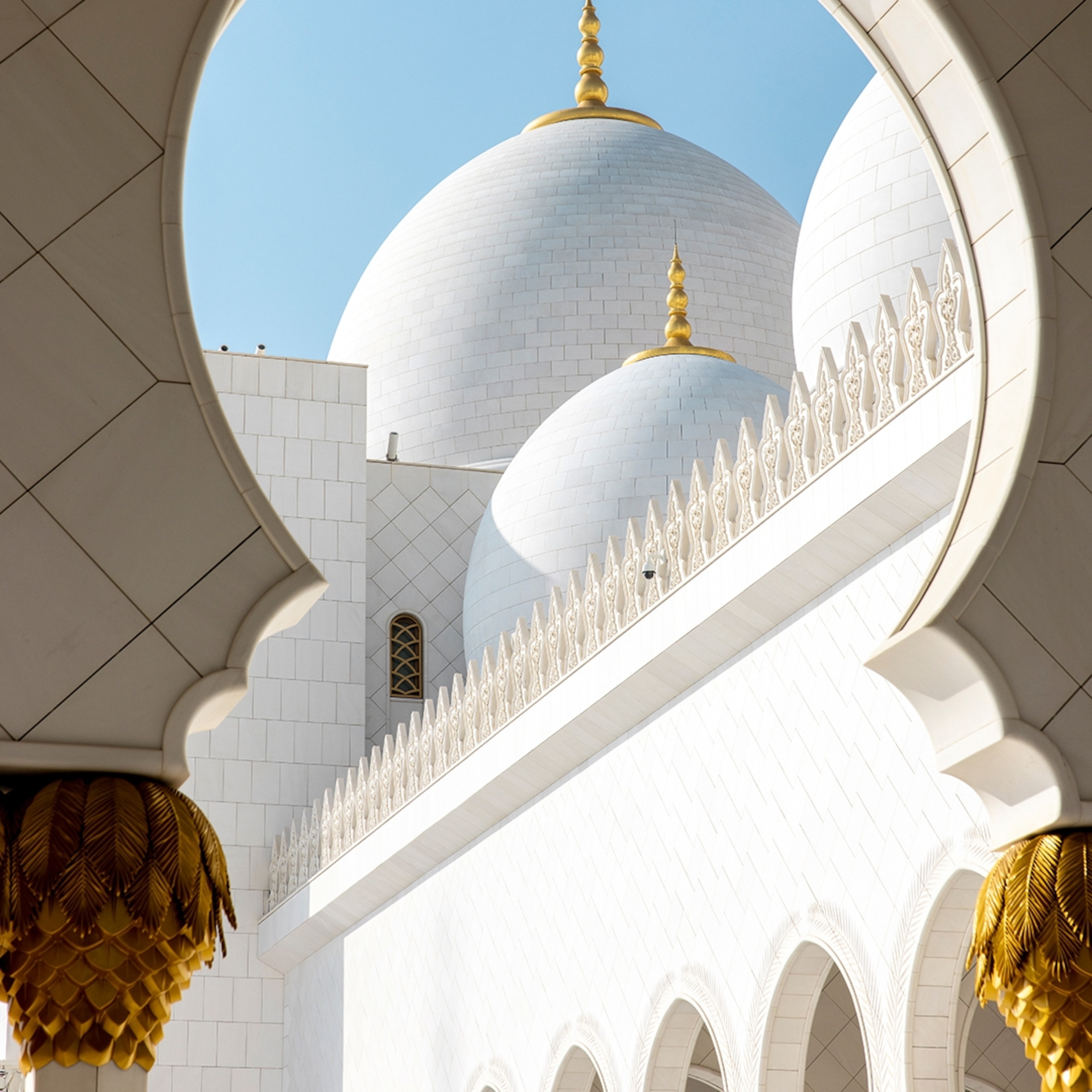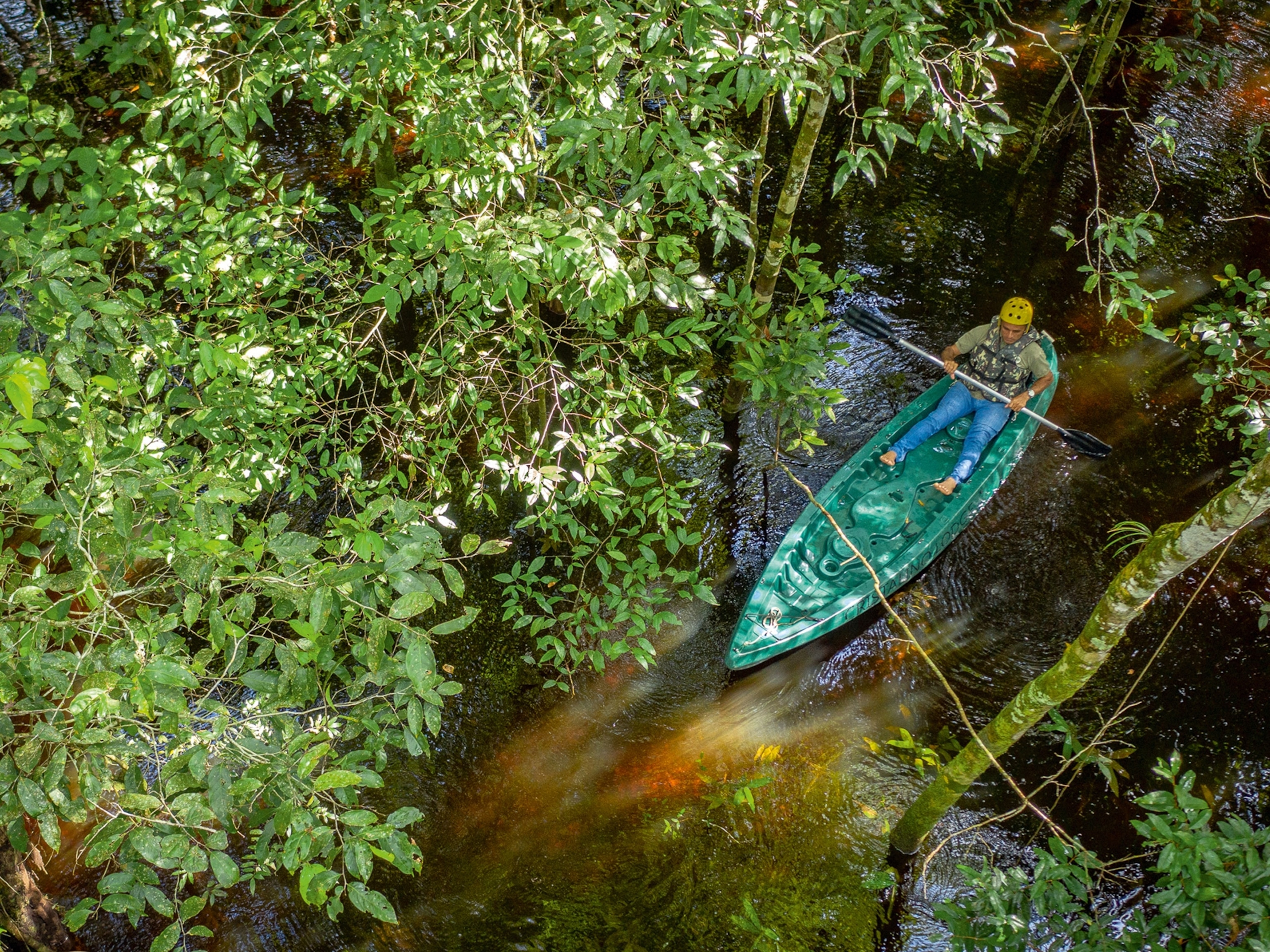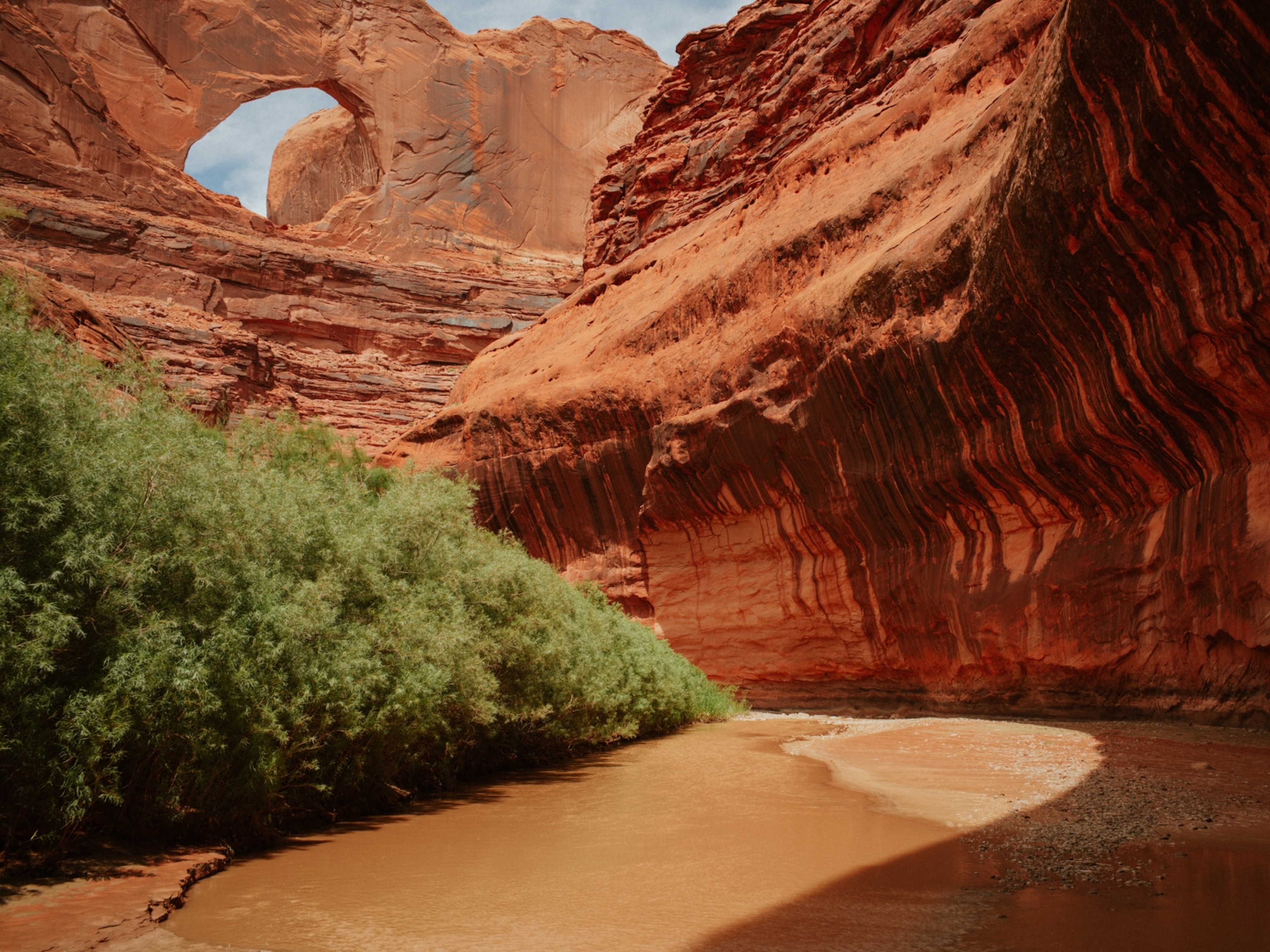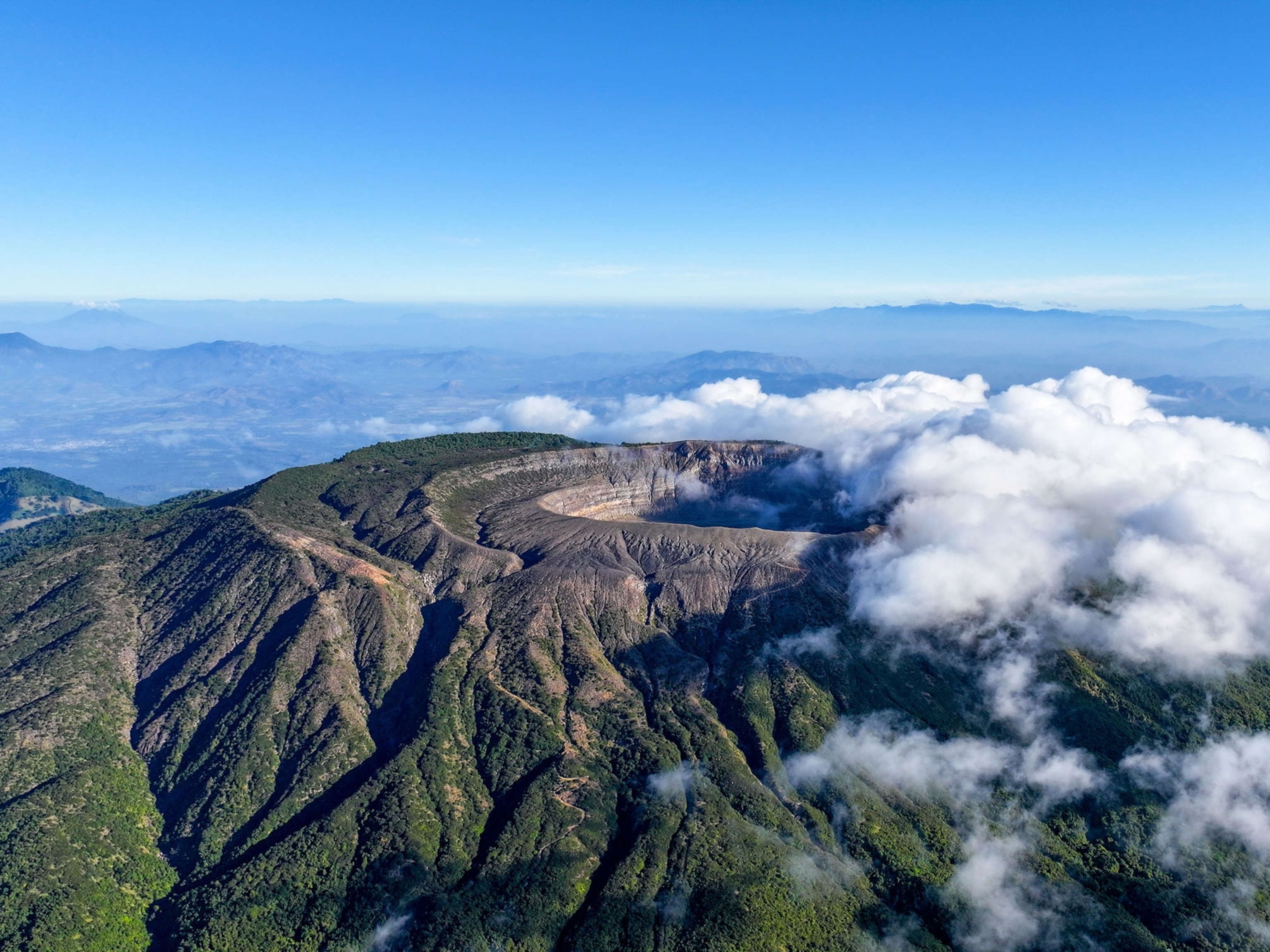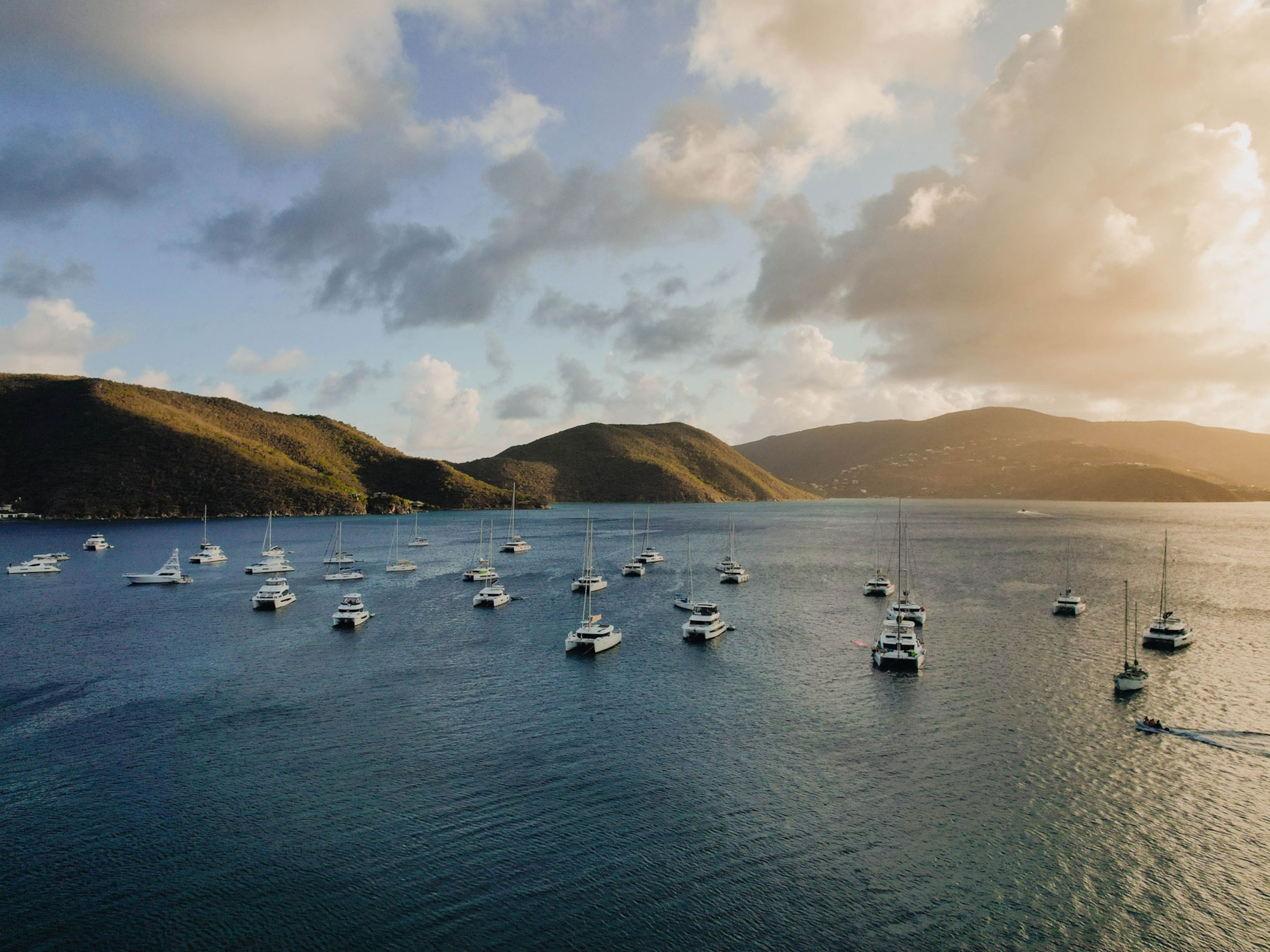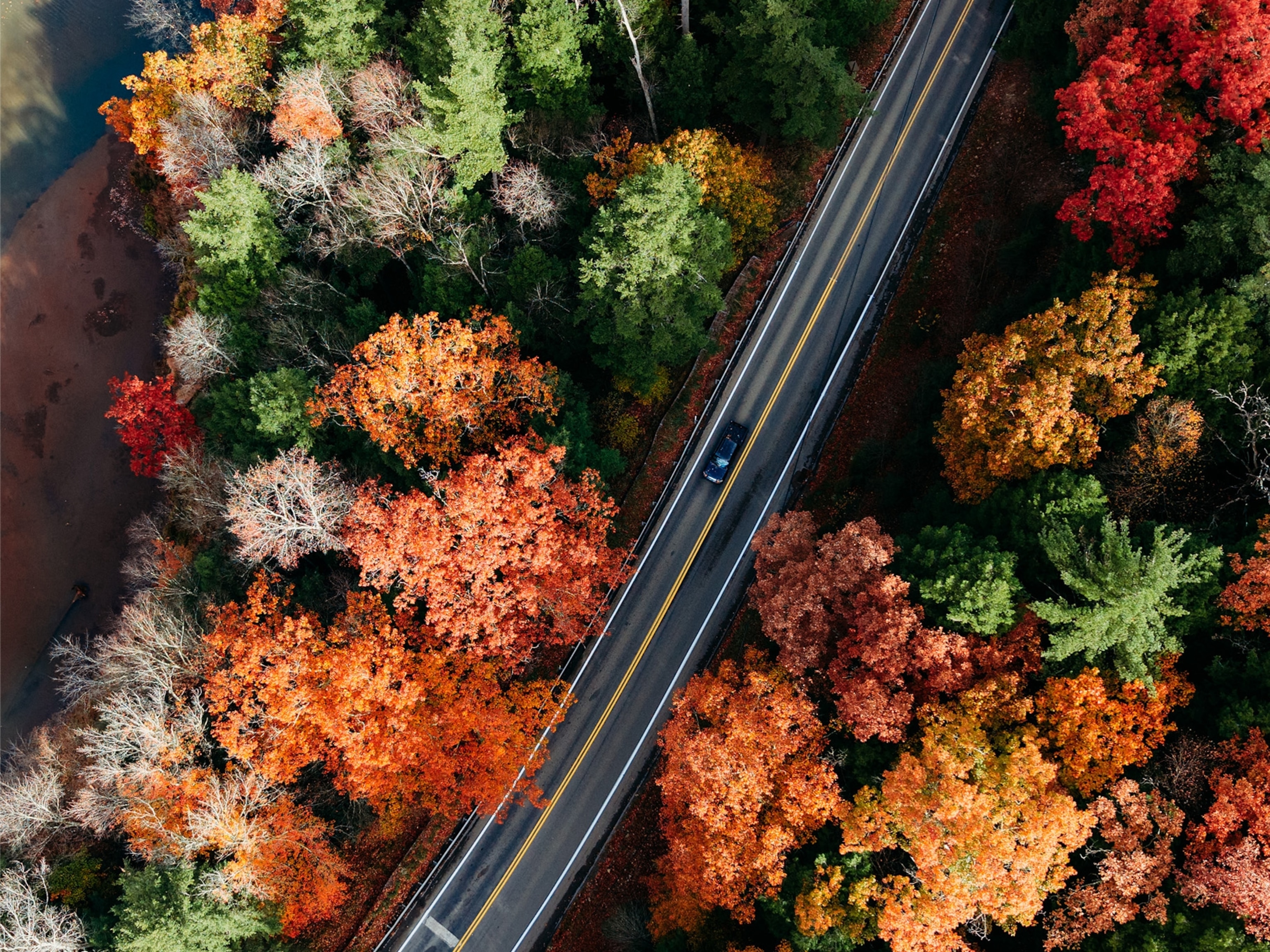
How Circumnavigating an Island by Kayak Is Like Speed Dating
On their island circumnavigation, Young Explorers Clare Fieseler and Becca Skinner stare down machete-wielding teens, learn to work together, and opt for mojitos.
Machetes are a way of life on Isla Bastimentos, an island off the Caribbean coast of Panama. A weathered Panamanian wielding a machete is usually a friendly farmer, the best kind of person to ask for directions. A kid wielding a machete is probably doing chores like clearing brush and is often standoffish. But I had never encountered two teenagers wielding machetes while clandestinely taking cell phone videos of me as I packed up my tent. This kind of machete-wielding was new to me.
But lots of “new” things were happening during our test expedition of a Caribbean island circumnavigation, in preparation for a similar expedition to a much larger and more challenging island next year. We were on day three of the four-day paddle, attempting the longest, hardest stretch to arrive at our starting point by nightfall. Becca Skinner, my paddling partner, and I were testing new-to-market boats, touring with professional camera equipment, and camping expedition-style during the local hurricane season for the first time. That morning, I feared the strengthening wind much more than these lanky teenagers. But my sole expedition partner had machetes at the top of her list of Things to Avoid.
“Let’s just get the hell out of here,” murmured Becca, an adventure photographer I had met only recently and teamed up with through a National Geographic connection. There was no reason for alarm, I thought; haste makes waste. It was just the two of us out there and we hadn’t yet mastered the process of packing our foldable kayaks after breaking down camp.
We had thousands of dollars’ worth of camera equipment with us, heavy jugs of fresh water, and boats structurally deficient for the weight we were asking them to bear. Becca’s cockpit rim was barely above the waterline when we first put in at Hospital Point on the island’s north coast, our launchpad for the expedition. But by then, our boat transport to Bastimentos had left us, and we had no way to shed the extra weight. No one could guard our extra belongings.
If we didn’t carefully balance the weight between our two boats exactly as we had the day before, I thought, one of us would be underwater. We needed to take our time. But the machete-wielders were making Becca increasingly nervous.
“It’s OK,” I said. “I’ll just ask these guys to leave.”
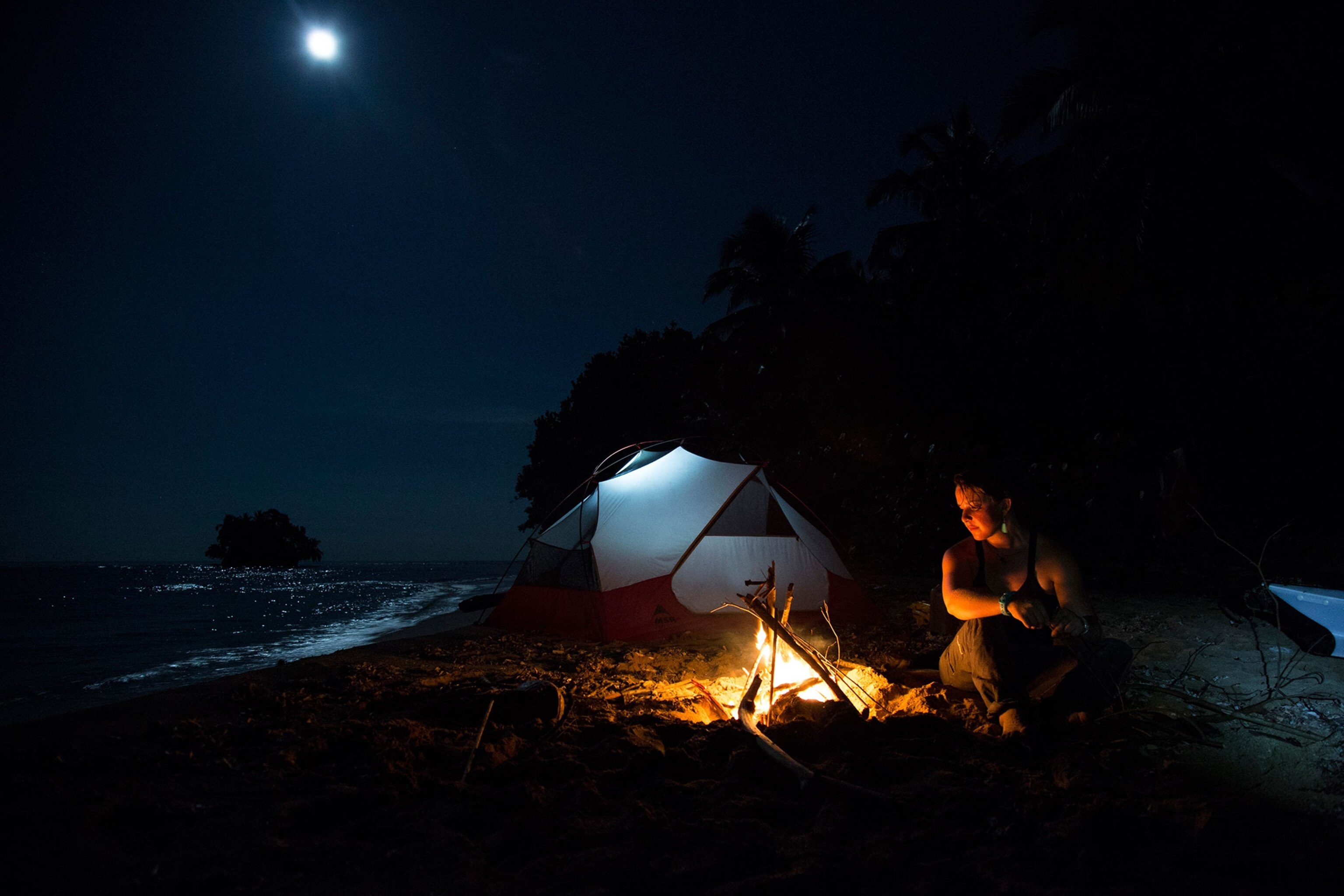
“Por favor, dejanos en paz.” Leave us in peace. This polite yet forceful phrase had helped me deter unwanted catcalling during my time living in Panama. The two teenagers glared, mumbled, and simply moved 20 yards down the beach. They continued videotaping us with their flip phones. Becca picked up the speed of her packing and urged me along.
Becca had years of mountain-based expeditions under her belt. Her family name, Skinner, was almost synonymous with mountaineering out West. Panama and this island’s mangrove-studded coastline, however, were unfamiliar territory to her.
She had first set foot on this island chain four days ago, just one day before we pushed off for our trip. While some of the nearby islands were popular backpacker destinations, almost 80 percent of Bastimientos was undeveloped and preserved for the local indigenous residents.
But, having lived there for months, I just got more frustrated. We’re fine! I muttered inwardly.
But then I realized how, just yesterday, Becca had been the frustrated one. I had miscalculated the distance we’d need to portage our kayaks to reach an indigenous village during our circumnavigation. Adding up the hours in the day and the energy left in our arms, I made a last-minute decision to forgo the planned visit. We had predicted the best photos of the trip would come from the village, but we both went quiet when we realized we wouldn’t get to take them.
Five minutes later, though, we picked up our chatter and our spirits. Becca, the more seasoned photographer, had accepted our change of plans. The disappointment rolled off her back and I noticed. Paddling over the colorful patches of white and pink coral together, scanning the beaches for ideas for camping, I had felt at ease despite the trip's mishaps.
I relented. I stuffed what I could into the hulls of the boats and I began dragging both down the beach. I hastily helped Becca into the Caribbean waves. I worried about the gear. Was it all watertight? I couldn’t even remember what I had done with my lens cases.
But we were off and paddling into what would be our toughest day: the ocean-exposed side of the island. I saw nothing but jungle and waves. Even though the island is just 33 miles around with few inhabitants and a handful of lodges, I had forgotten how isolated we were. As a visiting scientist at a field station on Isla Colon, I had effortlessly motored around Isla Bastimentos for months prior. Running experiments at Panama’s beautiful but degraded coral reefs, I was an outsider drawn to the same underwater spectaculars that backpackers had been flocking to since the 1990s. But paddling the exposed ocean side, alongside indigenous residents in dugout canoes, was another experience entirely. The overwhelming beauty came with overwhelming difficulty.
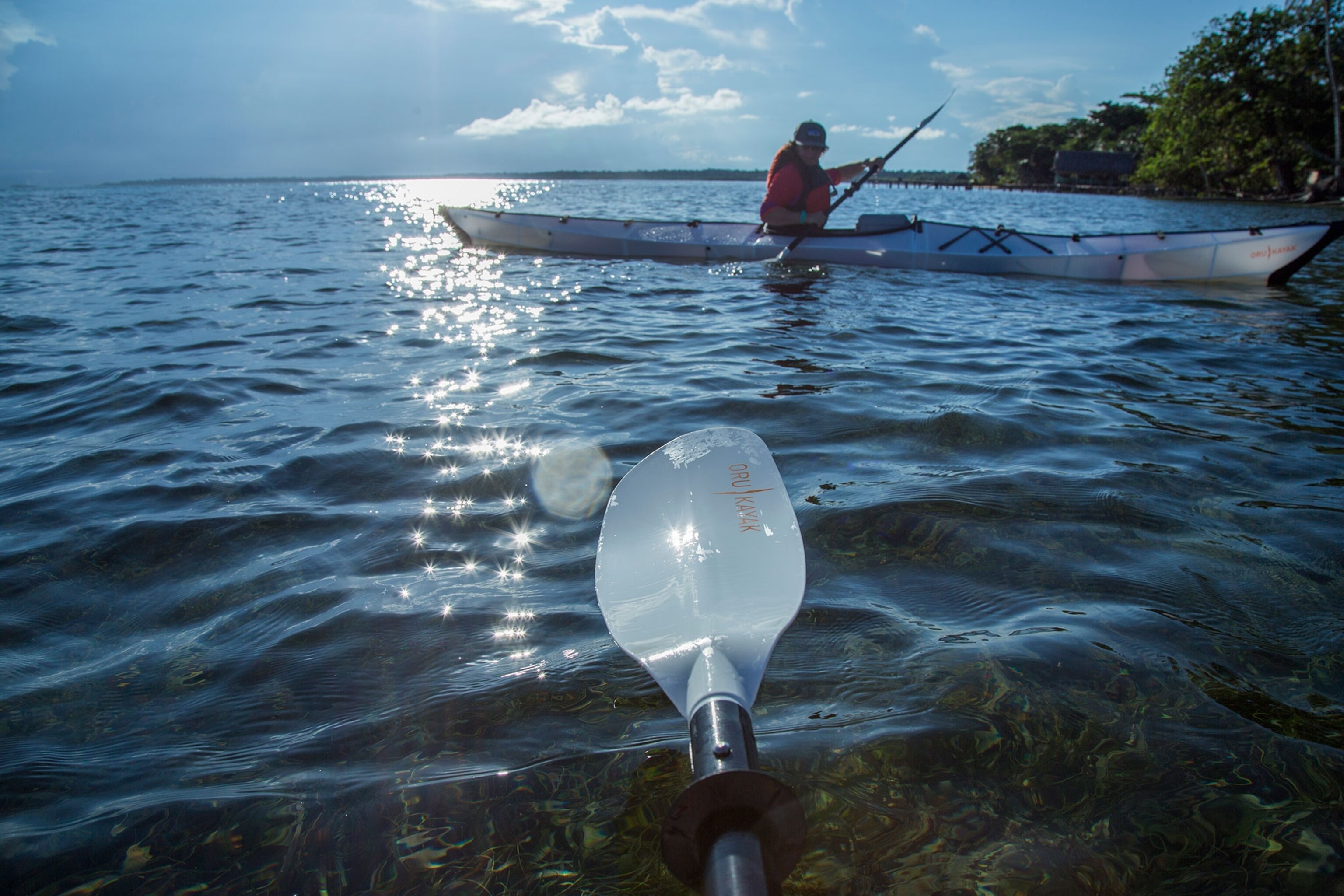
By midday, sunburnt and dehydrated, I needed some comfort. Becca saw my crashing morale and shared her extra water, suntan lotion, and snacks. Snacks could bring world peace if our global leaders were all stuck in kayaks in the middle of nowhere, I thought.
By day’s end, my fears about the weather were realized. Sunny, calm weather had graced our trip so far, but now, the winds picked up and we were going two strokes back for every stroke forward. We would never make it back to Hospital Point at this rate.
I had more paddling experience under my belt, but Becca had more perseverance. I wanted us to be safe, and we also intended to finish this circumnavigation with little help beyond what we packed in our hulls, which meant forgoing lodges. At the same moment, though, we admitted to each other that our arms were exhausted.
This expedition was only a test. I accepted that we didn’t have anything to prove today. We joked about cheating on our expedition and just opting for mojitos. The one rustic tourist haven was on the north side of Isla Bastimentos, and we could finally see it on the far side of the bay.
I can’t remember who made moves first. Becca and I turned landward and we each had a mojito in hand within 30 minutes. The accommodations at the Palmar Tent Lodge weren’t exactly camping. More accurately, I learned, it was a ritzier type of outdoor experience called “glamping.” Large canvas tents shaded platforms furnished with mattresses and the kitchen served heaping amounts of food shipped from the mainland. We were both relieved to wake up the next day to full bellies and no machetes.
- National Geographic Expeditions
“Is this cheating?” I asked.
“Oh, this is definitely cheating,” Becca laughed.
We packed up our boats before dawn and paddled around the peninsula to make it to Hospital Point just after sunrise. The site’s 19th-century namesake, built by the Chiquita Bananas company, sits in ruins. But it reminded us that the banana industry mowed down the region’s native forests for their plantations and, when malaria struck the workers, sent them to this mosquito-free bluff on Bastimentos for treatment.
We had covered almost 35 miles in three days when we dragged our kayaks to the beach below Hospital Point, where the granite remains stuck up from land at odd angles. We had completed the first circumnavigation of a tropical island in foldable kayaks. Sure, we hadn’t done it totally unassisted. But then again, I had also left our GPS behind and miscalculated our cultural venture. And tenting on Machete Beach hadn’t made things any smoother.
The trip had been imperfectly accomplished, so we snapped a celebratory photo for good measure. My friend Sebastian picked us up from the point, and when I told him about the machete incident, he shook his head.
“Probably better that you got out of there,” he replied. He told us that the village near Machete Beach had more influence from the mainland, more drugs, and some petty theft. “Who knows?” he added. “You’re way out there. I would have left, too.”
Becca’s instincts had been right. She had also been flexible. Together, we had avoided catastrophe, reached our goal, and laughed at ourselves along the way. When we had first planned this test expedition in preparation for the more challenging circumnavigation in fall 2017, we barely knew each other. And while we pitched this short Panama expedition to our families and sponsors as a way to test new gear, it ended up being a speed-test of each other. Or perhaps it was more like speed dating. Either way, we were a match. Machetes and all.
